|
- Catalog (in stock)
- Back-Catalog
- Mail Order
- Online Order
- Sounds
- Instruments
- Projects
- History Face
- ten years 87-97
- Review Face
- our friends
- Albis Face
- Albis - Photos
- Albis Work
- Links
- Home
- Contact
- Profil YouTube
- Overton Network
P & C December 1998
- Face Music / Albi
- last update 03-2016
|
|
|
|
- One of the main types of applied artwork is the artistic treatment of metals. The nomadic people has been developing this handicraft from time immemorial on, and it was facilitated by the many riches of the form of casts, coinage, engraving, gilding, incision of silver on iron, grinding, stamping and other technical methods widely used by the blacksmith-masters. Precious metals and semi-precious stones are used for jeweller's work, which are then decorated with filigree, i.e. intricate and interknitted national pattern from silver thread with complicated relief design. The coinage artcraft is widely practised, with works of art made from copper and brass with certain parts gilded. The treatment of steel with ornamented carving is revived.
|
|
- Eines der Hauptgebiete dieser angewandeten Kunst ist die künstlerische Behandlung von Metallen. Dieses Nomadenvolk entwickelte dieses Kunsthandwerk von frühester Zeit an weiter, wobei dies durch die Vielfältigkeit der Gussformen, Prägung, Gravur, Vergoldung, Einfassung von Silber auf Eisen, Schleifen, Stanzen und andere technische Arbeiten der Schmiedemeister erleichtert wurde. Edelmetalle und Halbedelsteine werden für die Arbeiten des Juweliers verwendet, wobei sie mit Filigranarbeiten (Verzierungen) angefertigt werden, d.h. mit komplizierten und verknüpften Mustern aus Silberfaden mit kompliziertem Relief-Design. Das Kunsthandwerk des Prägens ist sehr verbreitet, wobei hier die Werkstücke aus Kupfer und Blech gefertigt und gewisse Teile vergoldet sind. Die Behandlung von Stahl mit Zierschnitzerei erlebte eine Wiedergeburt.
|
 
Studio - Bi-Bid - more information about sculptures see:
History of Mongolian traditional art and artwork and
History of Mongolian art of Buddhists
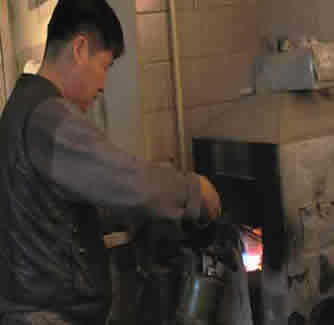 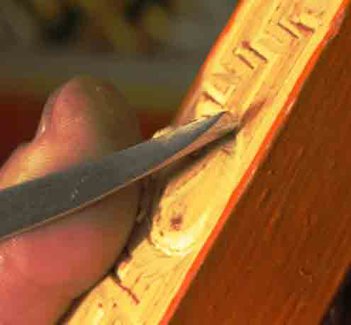
Below you can see great examples - click on an icon - Enjoy!
Amitayus (Ayush)
bronze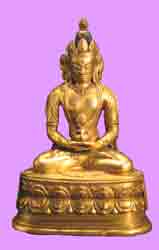 |
Shakyamuni Buddha (Burhan Bagsh) - bronze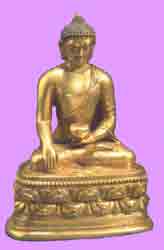
|
Lama (Yellow Cap Sect)
bronze
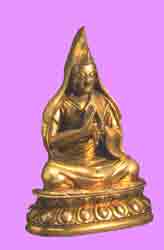 |
Lama
bronze
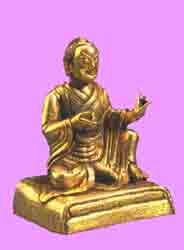 |
Padmasambhava
(Lovon Badamjunai)
copper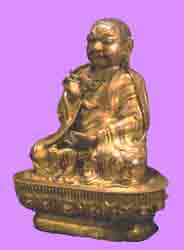
|
White Tara
(Tsagaan Dari Ekh)
bronze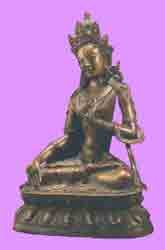
|
Manjushri (Manchshir)
bronze
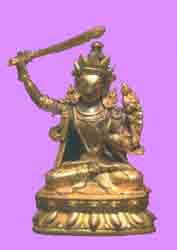 |
Green Tara
(Nogoon Dari Ekh)
bronze
 |
|
Bhaisajyaguru
Medicine Buddha
bronze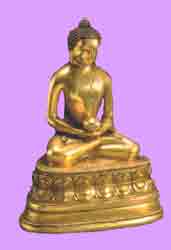
|
Dancing Dakini
(Gurgulkam)
bronze

|
|
Buddhist bronzes and paintings (e.g. thangkas) known as "sakhuis" in Mongolia. The deities of the pantheon are divided so as to represent the dual nature of all things in the Universe. There are the strong and vengeful manifestations of deities who maintain order through authority and fear, such as the nurturing deities such as Tara and Avalokitesvara.
|
Undur Gegeen Zanabazar, a prominent religious figure and famous sculptor of the 17th century, created 21 taras (consorts of Buddha), which show the beauty of Mongolian woman. Zanabazar laid the foundation for the depiction and praise of the human form in Mongolian sculpture. Metals such as brass and copper have been universally used in Buddhist art. Sculpture images for shrines in a Buddhist home or temple form a large portion in metal casting.
The statues are now permanently guarded but remain in situ "copper-gold" (in the Gobi region of southern Mongolia, Oyu Tolgoi contains in-situ metal "copper-gold").
|
|
Undur Gegeen Zanabazar, prominente religiöse Figur (war erster weltlicher und gleichzeitig höchster religiöser Führer - Khan Bogd - der Mongolen) auch ein berühmter Bildhauer des 17. Jahrhunderts, schuf 21 Taras (Gemahlinnen Buddhas), wodurch die Schönheit der mongolischen Frauen versinnbildlicht wird. Zanabazar legte den Grundstein für die Abbildung und Lobpreisung der menschlichen Form in der mongolischen Bildhauerei. Metalle wie Messing und Kupfer wurden in der buddhistischen Kunst universell eingesetzt. Bildhauerische Abbildungen für Altäre in einem buddhistischen Heim oder Tempel beinhalten einen grossen Teil in der Form eines Metallgusses.
Skulpturen aus "Kupfergold" wurde in der Gobi-Region in der südlichen Mongolei, Oyu Tolgoi gefunden (das das vor Ort vorhandene Metall "Kupfergold" enthält).
|
|
|
|
Sacred Hand Gestures - Ritual Gestures - Mudras - Symbols of Deeper Meaning (Mutar of Gar )
Although a bronze seated Buddha from Tibet may share similar iconography with examples made in Mongolia or China, certain characteristics distinguish the images. Buddhist sculptures have in their statuary hand gestures and they have specific meanings (Hand Gestures - Mudras - Symbols of Deeper Meaning).
Fearlessness and Granting Protection
(Spiritual Power)
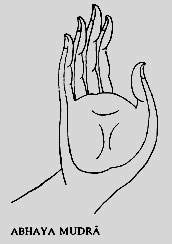
|
Granting Wishes
(Gift Giving)
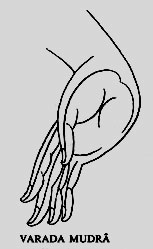
|
Debate Explaining
(Teaching)
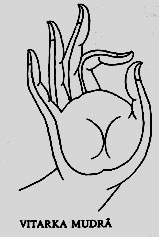
|
Greeting and Veneration
(Prayer)
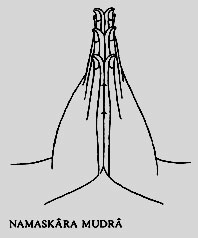
|
Warding off Evil
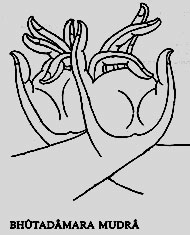
|
Beyond Misery

|
Turning the Wheel of Dharma
(Teaching)
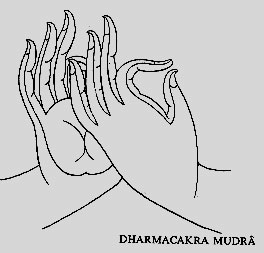
|
Meditation

|
Warding off Evil
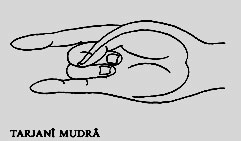
|
|
|
other examples of craftsman
|


